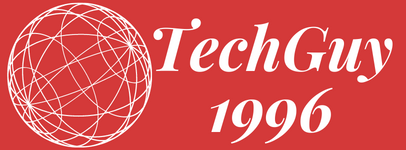Introduction
In recent weeks, a captivating trend has taken over social media: the transformation of personal photos and popular memes into the enchanting aesthetic reminiscent of Studio Ghibli films. This surge in "Ghibli-style" images has been fueled by advancements in artificial intelligence (AI), particularly through tools like OpenAI's ChatGPT. People worldwide are using this technology to infuse their visuals with the whimsical charm characteristic of Hayao Miyazaki's creations.
The Allure of Ghibli Aesthetics
Studio Ghibli, the renowned Japanese animation studio behind masterpieces like Spirited Away and My Neighbor Totoro, has long been celebrated for its distinctive art style. The studio's films feature hand-drawn animations, rich storytelling, and a profound connection to nature and human emotions. This unique aesthetic has garnered a global fanbase, with many admirers eager to capture a piece of that magic in their own creations.
The recent AI-driven trend allows individuals to reimagine their photographs or favorite internet memes in the Ghibli style. For example, an entrepreneur from Germany transformed a photo of his cat into an image that looked as though it belonged in a Miyazaki film. He expressed his delight, saying, "I really fell in love with the result. We're thinking of printing it out and hanging it on the wall."
How AI is Transforming Art
The technology behind this transformation relies on sophisticated AI models capable of analyzing and replicating specific artistic styles. OpenAI's ChatGPT, for example, has been updated to include image-generation capabilities that allow users to apply the Ghibli aesthetic to their photos. This feature has democratized access to art styles that were previously difficult to emulate without extensive artistic training.
OpenAI has acknowledged the popularity of this feature and the creative possibilities it unlocks. In a statement, the company mentioned that it "permits broader studio styles — which people have used to generate and share some truly delightful and inspired original fan creations."
Ethical and Legal Considerations
While this trend has been met with enthusiasm, it has also sparked significant debate regarding the ethical and legal implications of using AI to replicate established art styles. Hayao Miyazaki, Studio Ghibli's co-founder, has been vocal about his skepticism toward AI-generated art. In a 2016 interaction, upon viewing an AI animation demo, he remarked, "I am utterly disgusted. I would never wish to incorporate this technology into my work at all."
Artists and legal experts have raised concerns about the potential devaluation of human creativity and the unauthorized use of proprietary styles. Karla Ortiz, an artist involved in a lawsuit against AI image generators for copyright infringement, stated, "That's using Ghibli's branding, their name, their work, their reputation, to promote [OpenAI] products. It's an insult. It's exploitation."
The core of the controversy lies in whether AI models have been trained on copyrighted material without explicit permission, potentially infringing upon the rights of original creators. Legal professionals point out that while general artistic styles may not be protected under current copyright laws, the replication of specific, discernible elements from an artist's work could constitute infringement. This gray area in the legal landscape underscores the need for clearer guidelines as AI continues to evolve in the creative domain.
Impact on the Artistic Community
The rise of AI-generated art has elicited mixed reactions within the artistic community. Some view these tools as innovative means to democratize art creation, allowing individuals without formal training to explore and express their creativity. Others, however, perceive them as threats to the livelihood of professional artists and the integrity of original artworks.
The debate extends beyond individual artists to larger entities and public figures. For example, the use of Ghibli-style AI images by official accounts, such as that of the US government depicting sensitive scenarios, has been met with public outcry. Critics argue that such applications are tone-deaf and disrespectful to the original art form and its creators.
The Future of AI in Creative Expression
As AI technology continues to advance, its role in creative expression remains a topic of intense discussion. Proponents argue that AI can serve as a collaborative tool, enhancing human creativity and opening new avenues for artistic exploration. Conversely, detractors caution against the unregulated use of AI in art, emphasizing the need to protect the rights and livelihoods of human artists.
OpenAI's recent policy shifts reflect an attempt to balance these perspectives. The company has adopted a more nuanced approach to content moderation, allowing for greater creative freedom while aiming to prevent real-world harm. This includes reconsidering previously banned themes and emphasizing context-aware moderation.
Conclusion
The discourse surrounding AI-generated Ghibli-style images encapsulates broader questions about the intersection of technology and art. It challenges society to consider how to honor and preserve traditional artistic methods while embracing the possibilities introduced by technological innovation. As this trend unfolds, it serves as a poignant reminder of the delicate balance between progress and preservation in the ever-evolving landscape of creative expression.














0 Comments